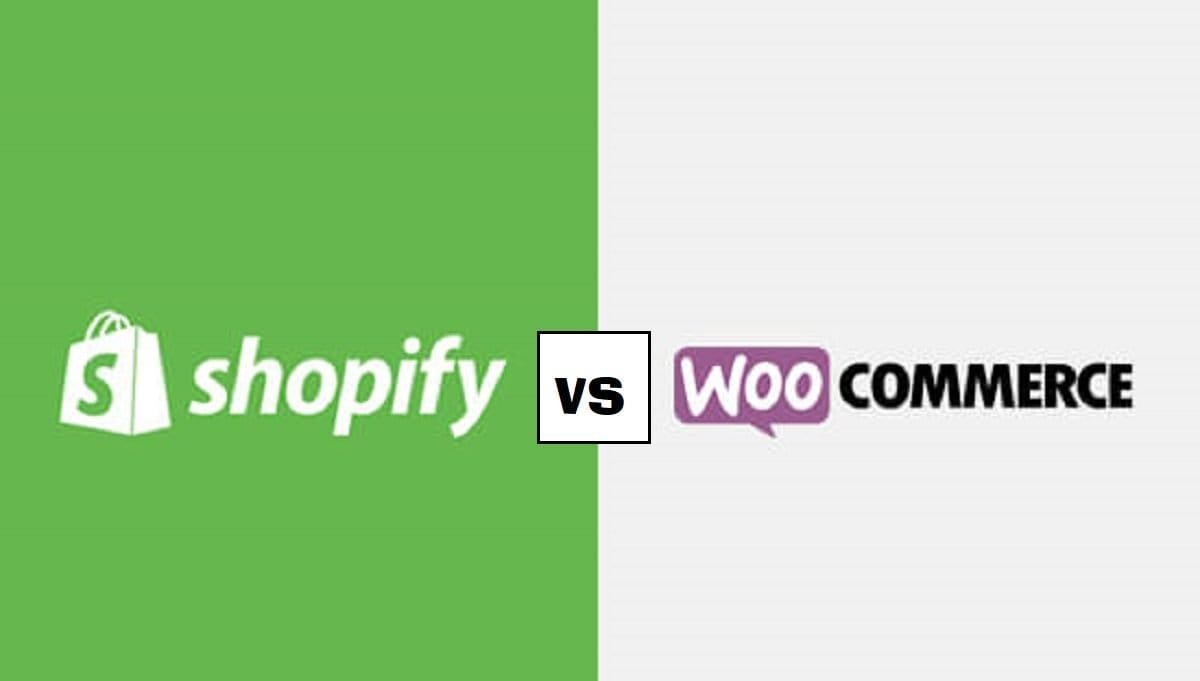As you know, both platforms are most popular nowadays and are easy-to-use e-Commerce platforms. To begin with, which one will accommodate your particular needs better, Shopify or Woo-commerce, for making a fantastic online shop? Which is more feature-rich? Which is the most affordable? Which is better looking? Which is progressively adaptable? Which is simplest to work with?
The main difference between Woo-Commerce and Shopify is that Shopify is a one-stop e-commerce solution designed to give you everything you need to get started online.
Shopify eliminates the complexities and technical aspects of running an online business and replaces them with easy-to-use tools. Your Shopify store can be set up and launched in minutes. However, it also means that you won’t get as much detailed control over your site.
On the other hand, if you’re looking for more customization options, Woo-Commerce is a stand-alone e-commerce software. This means that you can click on the code and access various parts of your store. Woo-Commerce gives you a lot of freedom to embed everything in your store, which is very important for your team. It also means that you can run your business together with a WordPress blog.
WHAT IS SHOPIFY?
Shopify is an all in one e-commerce platform that makes it simple for you to make a creative online store, allow installments, and manage your inventory all from one single platform without even worrying about the technical aspects of dealing with a website, for example, web hosting, security, caching and so on.
WHAT IS WOOCOMMERCE?
Woo-commerce is an open-source e-commerce plugin created for Word press. It enables you to use an effective content management system and run an online store with its help. With the help of the open-source nature, one can customize every part of the store and build custom extensions effectively.
1-DESIGN
How does Shopify design?
Shopify has 54 different store templates, and out of these 54 templates, ten are available for free. The best thing about these templates is that every theme has its unique variation. Along with this, you technically have access to 100 different designs.
The best thing about it is that they are mobile responsive and consist of a wide range of coloring options. They have a stylishly sleek and clean aesthetic, which makes them ideal for the modern day.
FORWARD-THINKING WEBSITES
Shopify designs are not made in-house. They are given to experts web designers, and they make sure they are as advance and as engaging as possible. We like this method and technique because you get innovative and different ideas from a good no. of companies and people, making improvements for a better selection.
HOW WOOCOMMERCE DOES DESIGN?
Woo-commerce is also a plugin developed by the developers from Woo themes. All things taken into account, it has not to feature to deliver any particular design traits individually. It presents you to help you sell the products and services online. The design part is left for your present or future word press themes.
Woo-commerce has been working to coordinate with most themes on the market, given that they follow standard practices and best proposals.
This means it takes much time, and you can go with any Word Press theme that you want to and still make it cooperate with Woo-commerce.
2-PRICE
The difference between Shopify pricing and Woo-commerce pricing.
Shopify pricing is evident and straightforward, whereas Woo-commerce is not.
Woo-commerce is well known for its free open source software plugin. The plugin is free, yet you have to consider the extra costs of the company making an online store.
Word Press is also free, but you need to take care of hosting, the expense of a theme, a domain name, an SSL certificate and extra extensions.
Shopify delivers a single, out-of-the-box solution within a few pricing packages. You sign up, and after that, you get the opportunity to use your new ecommerce store since all that you need is included from the get-go.
3-SHOPIFY VS WOOCOMMERCE- FEATURES
While both the platforms have different pricing ranges, they are almost similar in a sensible manner giving the ecommerce website what it needs. Dissimilar platforms like Shopify, woo commerce, and big businesses increase basic features with the e-commerce necessities built into the leading software.
Both have robust applications to install some other features that you need.
HOW SHOPIFY HELPS YOU SELL
Shopify offers altogether increasingly more accessible options. From the very beginning, Shopify provides you-
-Unlimited products
-Unlimited record storage
-Automatic fraud evaluation
-Manual request creation
-Discount codes
-Blog module
-Free SSL certificate
-Mobile business optimization
-SEO-prepared site structure
-Individual product surveys
-Social media integration
-Different product variations
-Print orders
-Abandoned cart recovery
HOW WOOCOMMERCE HELPS YOU SELL
As open-source software, Word press is notable for allowing third-party developers to make different extensions and Plugins. Woo-commerce further offers a lot of interesting and exciting additions.
HERE IS WHAT YOU WILL FIND INSIDE WOOCOMMERECE
-Payments through PayPal and Stripe built-in
-Automatic fraud evaluation
-Adjustable transportation rates and taxes
-Stock levels control
-Free SSL certificate
-Mobile-friendly structure
-SEO prepared site structure
-Works with your current Word press theme
-Many plugins accessible
-Different product variations
CONCLUSION
Shopify supports almost 8 lakh online stores, and it is said that Woo-Commerce is the world’s most popular e-commerce platform. There is no specific answer to which platform is better. People have different opinions about it. It depends upon your personal experience with both platforms. In my opinion, if you want to start your E-com store, then start designing it with Shopify’s free trial.
